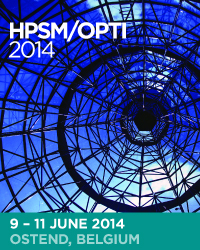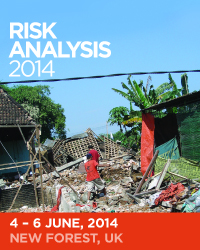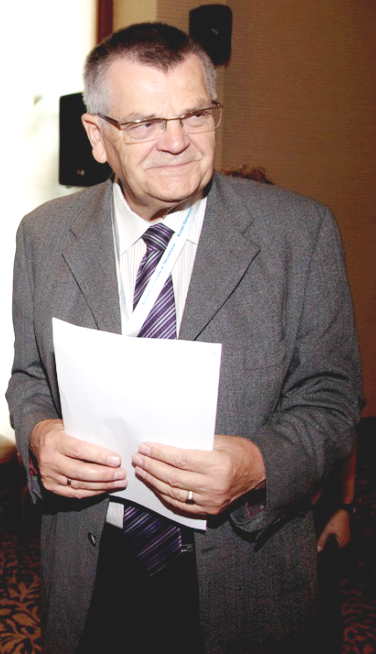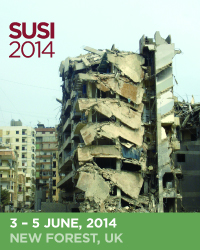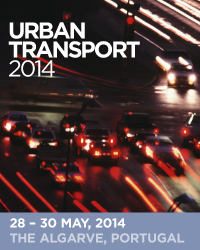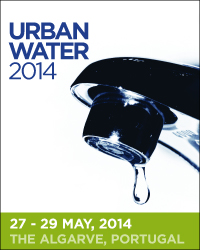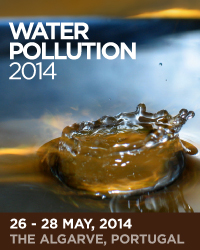Overview
The 7th International Conference on High Performance and Optimum Design of Structures and Materials (HPSM) recently took place in Ostend, Belgium. The meeting incorporated the seminar on Optimum Design in Engineering (OPTI) and was organised by the University of Brussels, the University of La Coruña and the Wessex Institute.
Some 125 years ago, the Paris World Exhibition of 1889, commemorating the anniversary of the French Revolution, unveiled the Eiffel Tower, proof of the new possibilities offered by improved performances of construction materials and the “natural design” methodology introduced by Gustave Eiffel. The latter profited from a then dramatic development of the “mechanics of materials and structures”, as a consequence of new needs introduced by the industrial revolution. As this change in the city landscape was obvious in Europe, most towns saw an explosive growth of its cities; the famous “skyscraper”, so celebrated by Louis Sullivan, compensated by the lack of space in the cities, was developed as an answer to “new challenges”, ie the construction in the vertical direction, and also in the circulation, the latter being solved with the invention of the elevator by Elisha Otis.
More recently, during the nineties and with the coming change of the century, the “Millennium” obsession set in, again not in the least in the world of structural engineering; every significant town in the world wanted its own landmark construction, commemorating the symbolic date of 2000.
Those were the years of great creativity and those constructions now stand as witness of civil and structural engineering skills. They benefited from an improved technical collaboration between the designers, the engineers and the constructors, principally due to the developments in the field of calculation and construction tools, but also due to the possibility of creating lightweight, high rise and long span structures.
Another reason for the dramatic changes taking place during the last twenty years is the evolution in technical awareness, the building team in its entirety is nowadays convinced that they should be accountable for the totality of the “design, build, operate, maintain and permanently recycle components and materials” process in which they participate.
The construction industry is one of the most significant contributors to greenhouse gas production, energy consumption – including embedded energy – and also in waste production. These should be compensated by a constant search for durability of adapted solutions through the development of “sustainable design”.
During the whole design and build process, a continuous need is felt to “optimise” the construction and this process is today present at the first stage of conceptual design. Important efforts are thus made to include optimisation techniques during the preliminary design phase. Additionally, modern tools nowadays also allow for the simulation of the whole life cycle of a construction.
The HPSM series of conferences originated in Seville in 2002 and continued in Ancona (2004), Ostend (2006), The Algarve (2008), Tallinn (2010) and the New Forest, home of the Wessex Institute in 2012. The Computer Aided Optimum Design in Engineering (OPTI) seminars have an even older trajectory, they started in Southampton in 1989 and reconvened thereafter in Boston (1991); Zaragoza (1993); Miami (1995); Rome (1997); Orlando (1999); Bologna (2001); Detroit (2003); Skiathos (2005); Myrtle Beach (2007); The Algarve (2009) and the New Forest (2012).
It was felt appropriate to bring together these two prestigious meetings to stress the importance of design optimisation to achieve the best performance of structures and material systems. The first conference brought together people from academia and industry involved with design, manufacture, testing and optimisation of challenging structures and innovative materials using the most up to date technologies.
Opening of the Conference
The Conference was opened by Prof Carlos A Brebbia who referred to the core objective of the Wessex Institute, to act as a link for transfer of scientific information at an international level.Carlos explained that evolution of the original research on boundary elements originated at the Institute, converting the technique into a tool for industrial use. The resulting computer programmes continue to be developed as a result of the research being carried out by WIT from its New Forest campus. This research has led to a series of Boundary Element Software systems now being applied in the energy and aerospace industries, amongst others.
The success of WIT industrial R & D activities is matched by the rapid growth of WIT Press, the publishing arm of the Institute. It publishes a substantial number of books each year, including those of the WIT Transactions. In addition, WIT Press has launched five journals and is planning to increase the number in the near future.
Carlos stressed the importance of the conference programme in terms of interaction and developing joint research projects. Conference participants also provide important feedback to WIT which helps to put together an ever evolving conference programme.
Finally, Carlos mentioned the importance of the Prigogine Medal, which is given every year to an important scientist whose work has been influenced by Ilya Prigogine, Nobel Prize Winner for Chemistry. Prigogine, although born in Russia, was educated and lived all his life in Belgium. His evolutionary systems theory has profound influence in a wide variety of sciences, including ecology and many others. He was an Honorary Chairman of one of WIT’s conferences and upon his death, WIT in association with the University of Siena, established a medal in his honour. This year the award will take place at the University of Siena, honouring a researcher who has been actively involved in studies related to the nature of water.
Following Carlos’ remarks, Prof Patrick De Wilde, Co-Chairman of the conference, welcomed the delegates to Ostend, his home town. The town is renowned for its sandy beaches and attractive buildings developed at the time of Leopold II who made it his summer holiday location.
Finally, Santiago Hernandez, also Co-Chair of the conference, explained the importance of the meeting and talked about its history, particularly that of the OPTI seminars, now incorporated into the HPSM conference.
Invited Presentations
A series of invited presentations enhanced the conference series:- “The application of differential evolution of HVAC optimization”, by Robert Derksen, University of Manitoba, Canada.
- “Atypical design optimisation of structures: case studies”, by Alireza Maheri, Northumbria University, UK.
- “Optimization of steel penstock in a bored tunnel”, by Stojan Kravanja, University of Maribor, Slovenia.
- “Heat transfer analyses of natural fibre composites”, by Hitoshi Takagi, University of Tokushima, Japan.
- “The effect of crystallinity on the mechanical properties of plain woven carbon reinforced composites using polypropylene”, by Kenichi Takemura, Kanagawa University, Japan.
- “Synergy between structural and architectural engineering: the point of view of the structural engineer”, by Patrick De Wilde, Free University of Brussels, Belgium.
- “Lightweight transformable structures: materialising the synergy between architectural and structural engineering”, by Niels De Temmerman, Free University of Brussels, Belgium.
- “Generalization of Michel’s solution of plane problem theory of elasticity in polar coordinates in the event of a radially inhomogenous body”, by Vladimir Andreev.
Special Seminars
There were two special seminars organised for the conference. The first of them by Prof Hitoshi Takagi and Tsutao Katayama, the former from the University of Tokushima and the latter from Doshisha University in Japan. In addition to Takagi’s paper on “Heat transfer analyses of natural fibre composites”, the other presentations included:- Fabrication and material characterisation of carbon nanotube verified polylactides
- Heating of carbon film reinforced thermolistic CRRTP dies using high frequency currents.
- “FEM analysis of a temperature distribution of CFRTP pipe mold with direct resistance heating”
- “CFRTP molding method of the three-dimensional shape by using direct resistance heating to carbon fiber”
- “Effect of the molecular weight of polycarbonate on the impact resistance of continuous carbon fiber reinforced polycarbonate composites”
- “Evaluation of the interfacial and interlaminar shear strength of carbon fiber reinforced polycarbonate made by a unidirectional sheet”
- “High-speed compression molding of continuous carbon fiber reinforced polypropylene”
- “Formability evaluation of carbon fiber NCF by a non-contact 3D strain measurement system and the effects of blank folder force on its formability”
- “The mode I interlaminar fracture toughness of carbon fiber/epoxy resin composite with freezing after water absorption”
Conference Topics
The rest of the papers were classified into the following topics:- Material characterisation
- Experiments and numerical analysis
- Composite materials and structures
- Green composites
- Components for automotive applications
- Structural optimisation
- Optimisation problems
- Steel structures
- Timber structures
- Corrosion problems
- Surface modification
- Innovative techniques
- Heritage construction
- Sustainable solutions
Special Seminar
A special feature of the conference was the special seminar arranged on Wednesday morning with another WIT conference called Mobile, Adaptable and Rapidly Assembled Structures (MARAS) which highlighted some of the presentations of interest to both audiences.Prof Patrick de Wilde introduced the two keynote addresses in this special session dedicated to bringing together natural and structural scientists and architects, stressing the importance of interaction and collaboration.
The first of the talks was given by Prof Lincy Pyl, from the Department of Mechanics and Material Construction, at the Free University of Brussels. She is a specialist in numerical modelling and steel structures. Her talk dealt with the synergy between structural and architectural engineering from the point of view of the structural engineer.
Lincy discussed the requirements that both professions ought to consider for the conceptual design of any building in order to achieve the best design in terms not only of strength but also the typology most appropriate to the problem. Lincy showed a number of case studies where the importance of the collaboration between the structural engineer and the architect was clearly shown.
The other keynote address was given by Prof Niels De Temmerman, also from the Free University of Brussels, who also spoke of the need to collaborate closely across different types of engineering (civil, structural, mechanical, electrical etc) and the architect. He particularly referred to the case of transformable structures. There should be a few component types and sets of mechanics that allow them to be rapidly deployed. He presented several case studies including some scissor type structures developed and built by his research group.
ISAC Dinner
The International Scientific Advisory Committee (ISAC) of the conference met over dinner to discuss how the meeting can be improved when it is reconvened in 2016. The dinner took place in a restaurant offering outstanding Flemish cuisine. The discussion concentrated on new topics for inclusion in the Call for Papers, in order for the conference to continue evolving and attracting original contributions. A few nominations were discussed for new members of the Board, as well as where to hold the 2016 meeting.Following the ISAC meeting, Carlos asked for any comments or suggestions on how to promote the new International Journal of Computational Methods and Experimental Measurements. The publication launched in 2013 continues to attract excellent papers and is well suited as a venue for publication of extended versions of the papers published at the meeting.
Social Occasions
The Conference offered many opportunities for delegates to interact with each other in a fresh environment, including lunches taken together, in addition to coffee breaks. The location of the hotel facing the sea on the long Ostend promenade was conducive to strolling together in a very relaxed manner, characteristic of Ostend. The excellent quality of the restaurants added to the pleasure and success of the conference.Before the Conference banquet, Patrick de Wilde gave a short talk regarding the history of Ostend, which started as a small fishing village but rapidly grew in importance because of its excellent port facilities. Trading was for a long time the main strength of its economy, which grew to compete with that of the Dutch East India Company. The highlight of the city’s history was a three years’ long siege by Spanish forces. Although the city was eventually taken, its heroic resistance became part of the local folklore. The city suffered during the two World Wars, due to its strategic importance as a port. Ostend is now a vibrant seaside resort with many cultural events as well as renowned beaches. The reputation of Ostend as a holiday resort was started by Leopold II, King of Belgium and Congo, who built the promenade, hotel, racecourse and numerous parks during another golden period of the town’s history. Nowadays, Ostend is once again associated with charming and relaxing seaside holidays.
The Conference banquet took place in a fort built by Napoleon to control access to the port of Ostend. The fort has been renovated and comprises an excellent restaurant with terrace from which it is possible to have a panoramic view of Ostend. The delegates were welcomed with a glass of spumante and a taste of the local beer, including the famous Koite beer originated during the siege of Ostend, when the city was surrounded by the strong army. The food – as usual in Ostend – was excellent and accompanied by good wines, resulting in a most happy and friendly evening. On their way to the Fort and back Anne Marie de Wilde, Patrick’s wife, described the different sights and some of the local history.
Closing of the Conference
The Conference was closed by Carlos who, after thanking the delegates for having come, expressed his wish that they will continue to collaborate with WIT in the future and consider visiting the Institute next time they are in the region. This will allow them to appreciate better the work carried out by WIT.Conference Proceedings
The proceedings HPSM 2014 – High Performance and Optimum Design of Structures and Materials, 704pp (Print ISBN: 978-1-84564-774-2; eISBN: 978-1-84564-775-9) are available from WIT Press. Orders can be placed on the WIT Press web site at www.witpress.com or by email: marketing@witpress.com, telephone: +44 (0) 238 029 3223 or fax: +44 (0) 238 029 2853.Papers from the conference will also be hosted online at the WIT eLibrary as Volume 137 of WIT Transactions on the Built Environment (ISSN: 1746-4498, Digital ISSN 1743-3509). For more details visit the WIT eLibrary at http://library.witpress.com
